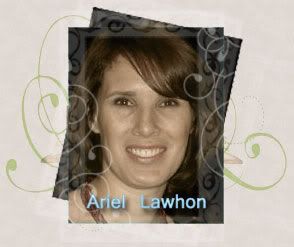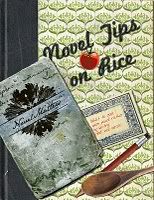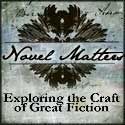I think of him first as a storyteller, this Jesus of
mine. That might sound sacrilegious to
some. He is after all Savior and Redeemer. Lion and Lamb. But to me, I would
not know him as any of those had he not spoken to me first in the gentle
whisper of story. Given half a chance, I would sit at his feet and listen even
now. I’d follow him through those dusty streets. Stop and ponder in that
crowded marketplace. Or lounge on a grass-filled hillside. Prodigal sons and
lost coins, rich fools and fig trees, talents and tares – I would cross my legs
and sink to the floor, chin on hands, to hear his stories. So kind of him to
write them down so I can read them at my leisure.
This has been a long year for me. And I find myself grappling
with Story. I am a student, learning and listening. Over and over again I
return to the parables. And I wonder what they mean to me as a writer.
Spend any time in Christian circles and you’ll eventually
hear this: “Jesus knew how important stories are. That’s why he spoke in parables.”
Those thirty short anecdotes sprinkled through the first four books of the New
Testament are the subject of countless sermons. Yet I’ve never seen them used
to teach the craft of storytelling.
Several weeks ago this realization led me to a friend, a
former NFL player and PHD in Biblical Studies. The book he handed me weighs
more than my two-year-old.
“Do I need a doctorate to read this?”
He gave me a cheeky smile and a bone-rattling pat on the
back. “If you want to understand the God of story, this is the book.”
Turns out, the Dictionary of Biblical Imagery is a
fascinating read – if you have time to absorb all 1058 pages. Sorry to say I
skimmed. My interest then, and now, lies in a mere two pages beneath the
heading of “Parable,” a portion of which reads:
“The
narrative qualities of the parables are a
virtual case study in the “rules” of popular storytelling as we find them in
folk narrative, including a reliance on archetypes…Only one of the characters (Lazarus) is named, yet as we encounter the
characters of the parables we sense that we have known them already. They are
universal types, possessing the traits that we and our acquaintances possess.
Never has such immortality been thrust upon anonymity. We do not need to know
the name of the woman who first loses and then finds her lost coin: she is
every person. The family dynamics of the parables of the prodigal son and the
two brothers whose father asks them to work in the vineyards could be observed
at any family’s breakfast table… We come to realize that it is in the everyday
world of sowing and eating and dealing with family members that people make the
great spiritual decisions and that God’s grace works.”
And that’s the power of story, isn’t it? To see ourselves in
the narrative. To squirm and wrestle. To celebrate. I find it interesting that
overt religious references in the parables are rare. Jesus never inflects his
images, never says, “Oh, by the way, that bit about the Prodigal Son is really
about you and God. Wanted to make sure you caught that.” Instead, he lets me see
my reflection in the story. He leaves me to wonder which part I play.
And I learn from this, tapping my thoughts onto a hard drive
while my babies sleep. That’s what it means to show instead of tell. He doesn’t
have to elaborate. I am shown the holy in the routine: planting and harvesting,
a wedding invitation, baking bread, lighting a lamp, traveling to a distant
town. The parables teach me to trust that readers understand the unspoken
language of story.
“A
final folktale feature of the simple stories Jesus told is their reliance on
archetypes – master images that recur throughout literature and life. We think
at once of such motifs as lost and found, robbed and rescued, sowing and
reaping, sibling rivalry. Often these archetypes tap deep wellsprings of human
psychology.”
Master images. Master storytelling. Simple and profound and,
honestly, beyond the reach of my current abilities. I wish I could say that I
fully understand how to apply the literary tools found in the parables to my
own writing. But the truth is that I’ve only scratched the surface. Yet even as
I struggle to learn this craft, he says, “Come, let me tell you a story.”














5 comments:
Reminds me I need to re-read Dorothy Sayers' "The Mind of the Maker" about the Trinity's place in story. :)
Maybe you aren't the Master of storytelling, Ariel. But you've captured the heart of the tale given to you by THE Master. Keep tapping into that heart of His in yours, and you'll no doubt surpass your expectations. Good post.
"Come, let me tell you a story."
I love this, Ariel. It reminds me of a favorite poem by Teresa of Avila (quoted here from Love Poems from God by Daniel Ladinsky):
Laughter Came From Every Brick
Just these two words He spoke
changed my life,
"Enjoy Me."
What a burden I thought I was to carry -
a crucifix, as did He.
Love once said to me, "I know a song,
would you like to hear it?"
And laughter came from every brick in the street
and from every pore
in the sky.
After a night of prayer, He
changed my life when
He sang,
"Enjoy Me."
That sounds like a powerful book! I feel the same way about The Artist's Way by Julia Cameron in which she acknowledges God as the source of all creativity. Wonderful book!
"Instead, he lets me see my reflection in the story. He leaves me to wonder which part I play."
There. That's what I'm trying to master twenty years into this storytelling thing. That powerful bit of restraint that lets the reader make the story her own, lets her soul enter into it, mingle and be recognized.
Post a Comment